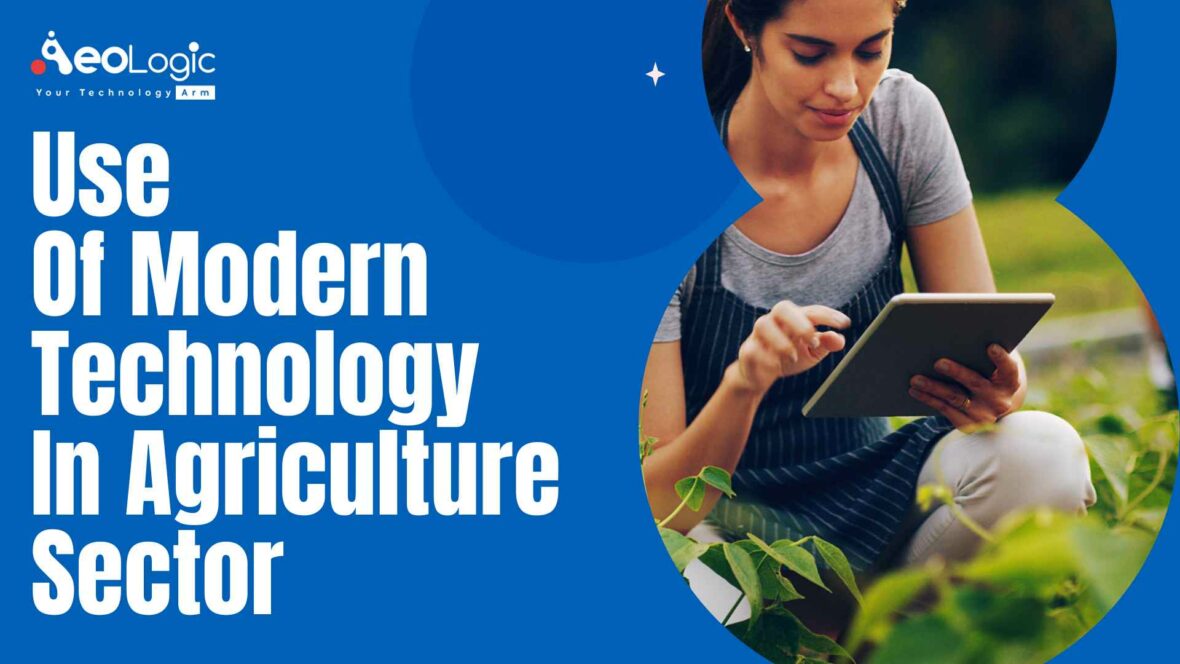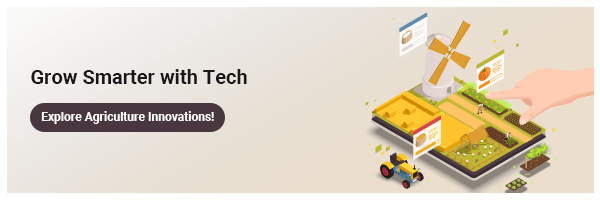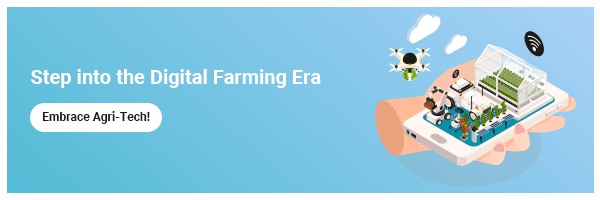The most essential issue in the world today is the food supply. The demand for food has increased by more than twice the population growth rate over the past 40 years. In fact, according to a report by the Food and Agriculture Organization (FAO), about 11% of the global population, or 815 million people, are undernourished and do not have enough food for their active and healthy lives.
The article talks of how modern technology has been very helpful in the agriculture sector and it is helping to produce more and better quality of food, which is, in turn, helping to sustain life.
Let’s begin!
The Use of Modern Technology in the Agriculture Sector
The use of modern technology in the agriculture sector is vast. It has helped farmers in various ways. The adoption of new and improved technologies has increased the production and productivity of crops. It has also helped in reducing the cost of production. The use of technology has also made the farming process easier and more efficient.
Some of the popular technologies used in the agriculture sector are:
Top 8 Modern Technology In Agriculture Industry
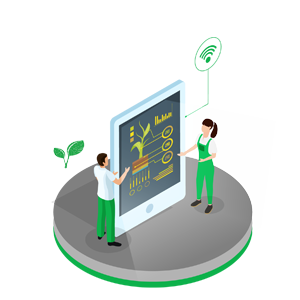
1. Drones: Drones are being extensively used for mapping, surveying, and crop monitoring. They help in collecting data that can be used for the planning and execution of farming activities.
2. GPS Technology: GPS technology is widely used in precision farming. It helps in locating the field boundaries and applying fertilizers, pesticides, and herbicides accurately. This reduces wastage and increases efficiency.
3. Satellite Imagery: Satellite imagery is used for weather forecasting, crop monitoring, and yield analysis. It helps farmers take timely decisions regarding irrigation, cropping patterns, etc.
4. Automation: Automation solution has been widely adopted in agricultural processes like sowing, transplanting, harvesting, etc. This has reduced the dependence on manual labor and increased efficiency.
5 . IoT Sensors: IoT sensors are being used for soil moisture monitoring, weather tracking, etc. This information helps farmers to make better decisions about irrigation, inputs application, etc.
6. Soil sensors: Soil sensors are used to measure soil moisture levels, temperature and other factors that affect crop growth. The data collected by the sensors is transmitted wirelessly to the farmer, who can then adjust his or her farming practices accordingly.
7. Weather monitoring: Farmers can now access real-time weather data that can help them make decisions about when to plant, how to irrigate, and what type of crop to grow. This information can be accessed via weather apps or websites, or through dedicated weather stations on the farm.
8. Agricultural robots: Agricultural robots are being developed to carry out various tasks on farms, such as milking cows, picking fruits and vegetables, and even mowing grass. These robots can work long hours without tiring, and can often do a better job than human workers.
9. Artificial Intelligence: Artificial intelligence (AI) has revolutionized the field of agriculture. Contemporary AI-based technology and tools facilitate the collection of data and aid in the practice of precision farming and making well-informed decisions. Drones, remote sensors, and satellites continuously collect data on weather patterns in and around the fields, offering farmers crucial information on temperature, rainfall, soil moisture, and other relevant factors.
Nevertheless, artificial intelligence faces limited adoption in a country such as India due to obstacles such as small-scale farming, divided land ownership, and other factors. However, it is undeniable that AI-based technologies have the potential to enhance accuracy in large-scale agriculture and result in a significant increase in output.
Do you know? How AI is Transforming the Agriculture Industry
Importance of Modern Technology In Agriculture Industry
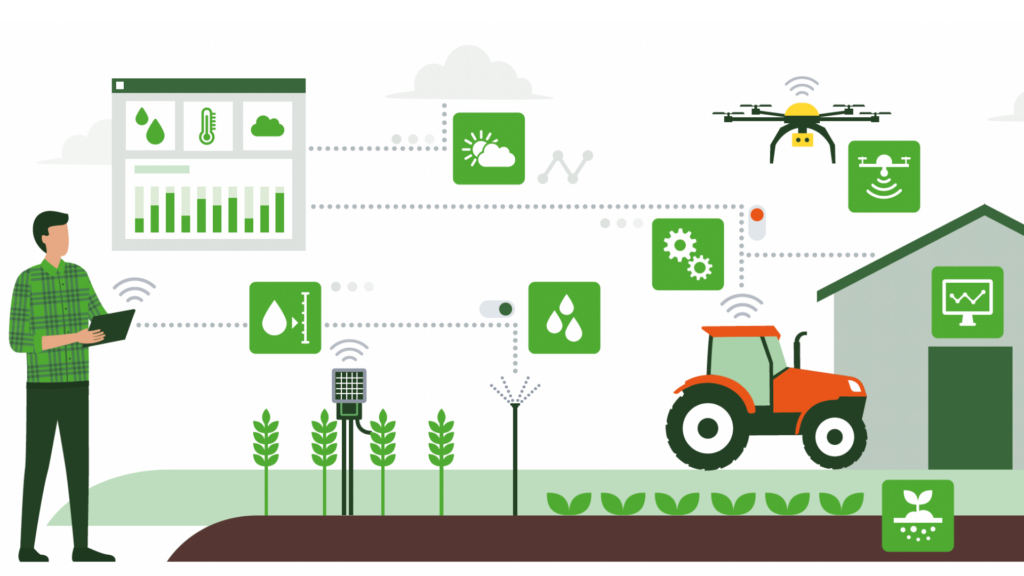
Modern technology in agriculture has led to increased production and productivity. This has in turn led to improved food security and incomes for farmers. In addition, it has helped to create new jobs and improve the quality of life for rural communities.
Vertical farms use up to 70% less water than traditional farms.
Technology Boosts Agricultural Productivity
Technology has played a key role in increasing agricultural productivity. For example, the use of mechanization has reduced the need for manual labor, thus increasing efficiency and output. The introduction of irrigation systems has also helped to boost production by making it possible to grow crops in otherwise arid areas. In addition, modern technology has made it possible to develop high-yielding crop varieties that are resistant to pests and diseases.
The use of technology in agriculture has also had a positive impact on food security. Increasing production has helped to ensure that more people have access to nutritious and affordable food.
Agricultural Technology can Create New Jobs
Technology can also help to create new jobs in the agricultural sector. For instance, the use of mobile phones and other digital technologies is providing new opportunities for farmers to connect with markets and sell their products directly to consumers. In addition, the development of value-added services such as agro-tourism is creating new employment opportunities in rural areas.
Checkout Our Trending Blog: How Technology Is Boosting the Agriculture Industry
Impact of Agricultural Technology on Farmers
In recent years, there has been a significant impact of agricultural technology on farmers across the globe. With the help of technology, farmers are now able to increase their yields and produce more crops than ever before. In addition, they can also reduce their costs by using less labor and inputs.
However, there are also some drawbacks to using technology in agriculture. One of the main problems is that it can lead to over-dependence on machines and chemicals, which can be expensive to maintain. Moreover, if not used properly, it can also damage the environment.
Impact of Agricultural Technology on Consumers
Agricultural technology has impacted consumers in many ways. The use of modern technology has helped farmers to increase the production of crops and livestock. It has also helped to improve the quality of the products. The use of new technology has also reduced the cost of production.
The adoption of new technology has also led to the development of new methods of marketing and distribution of agricultural products. This has helped the farmers to reach a wider market for their products. The use of technology has also helped to create new jobs in the agricultural sector.
Also Read: Agriculture Website Designing To Increase Your Agri-Business
Impact of Modern Technology on Agriculture
Modern technology has had a significant impact on agriculture, revolutionizing the industry and improving productivity, efficiency, and sustainability. Here are some key ways in which technology has influenced agriculture:
- Precision farming: Technologies such as GPS, remote sensing, and Geographic Information Systems (GIS) enable farmers to gather precise data about their fields. This data helps them optimize the use of fertilizers, water, and pesticides, leading to improved crop yields and reduced environmental impact.
- Automation: Agricultural machinery has become increasingly using automation solutions, reducing the need for manual labor and improving efficiency. Tractors equipped with GPS systems can navigate fields accurately, and automated machinery can perform tasks like planting, harvesting, and sorting crops with precision and speed.
- Remote monitoring: Internet of Things (IoT) devices and sensors allow farmers to remotely monitor various aspects of their operations. They can track soil moisture levels, temperature, humidity, and crop growth patterns, helping them make informed decisions about irrigation, pest control, and crop management.
- Genetic engineering and biotechnology: Advances in biotechnology have led to the development of genetically modified (GM) crops with improved traits such as disease resistance, drought tolerance, and higher nutritional value. These crops offer increased yields and reduced pesticide usage.
- Data analytics Solutions: The collection and analysis of large amounts of data from farm operations have become crucial in making informed decisions. Farmers can analyze data on weather patterns, crop performance, soil conditions, and market trends to optimize their farming practices, minimize risks, and maximize profits.
- Vertical farming and indoor agriculture: With the help of technology, indoor farming systems, such as hydroponics, aquaponics, and vertical farming, have gained popularity. These methods allow year-round cultivation in controlled environments, conserve water and land, and reduce transportation costs.
- Drones and satellite imagery: Drones equipped with high-resolution cameras and sensors can capture detailed images of fields. These images help identify crop health, detect pest and disease outbreaks, and assess irrigation needs. Satellite imagery provides a broader perspective, allowing farmers to monitor large areas and make data-driven decisions.
- Farm management software: Specialized software applications assist farmers in managing their operations efficiently. These tools enable them to plan and track activities, manage inventories, analyze financials, and streamline logistics, improving overall farm management.
Overall, modern technology has transformed agriculture, making it more productive, sustainable, and resilient. By leveraging these advancements, farmers can optimize their resources, reduce environmental impact, and meet the growing demand for food in a rapidly changing world.
Success Stories on Tech Use in Agriculture
1. Precision Farming in the US:
In the U.S., precision farming uses things like GPS mapping, soil scanning, data management, and IoT tech to get better crops while using fewer resources. Farmers fly drones over crops, use satellite images to check soil health, and use self-driving tractors for planting and harvest. This makes farming more efficient and sustainable.
Impact: Farms that use these techniques have seen their crops grow about 20% more on average. Some farms have used up to 70% less herbicide. This approach doesn’t just help grow healthier crops and more of them, it also means farming is not as harmful to the environment.
2. Singapore: A Hub for Tech-Driven Vertical Farms
Singapore is utilizing high-tech vertical farms that merge automation, artificial intelligence, and aeroponics to grow vegetables. Because these farms use less water and land and avoid chemical pesticides, they’re a greener substitute for old-fashioned farming.
Impact: Vertical farming in Singapore? Up to 10 times higher yields per square meter than typical farms. This advance is key for countries where there’s not much land to grow crops. It’s a shining example of urban farming that can be copied all over the globe.
Final Words
Agricultural productivity has increased manifold with the use of modern technology. In fact, it is one of the few sectors where labor-saving devices have been fully utilized. Today, a farmer can do the work of several men and women with the help of machines. This not only saves time but also reduces cost and increases output.
If you have any concerns about agricultural technology, you can contact Aeologic Technologies!
Related Blogs:
- How AI/ML Can Change the Public Transportation Industry
- Transforming Business With Digital Technology in the Oil Palm Industry in India
- Importance of Digital Asset Management in the Retail Industry
- How AI is Transforming the Agriculture Industry
- 10 Ways to Use Artificial Intelligence to Improve Business Processes
- The Future of IoT Technology in Convenience Stores
- Building Manufacturing Resilience Through AI and ML


